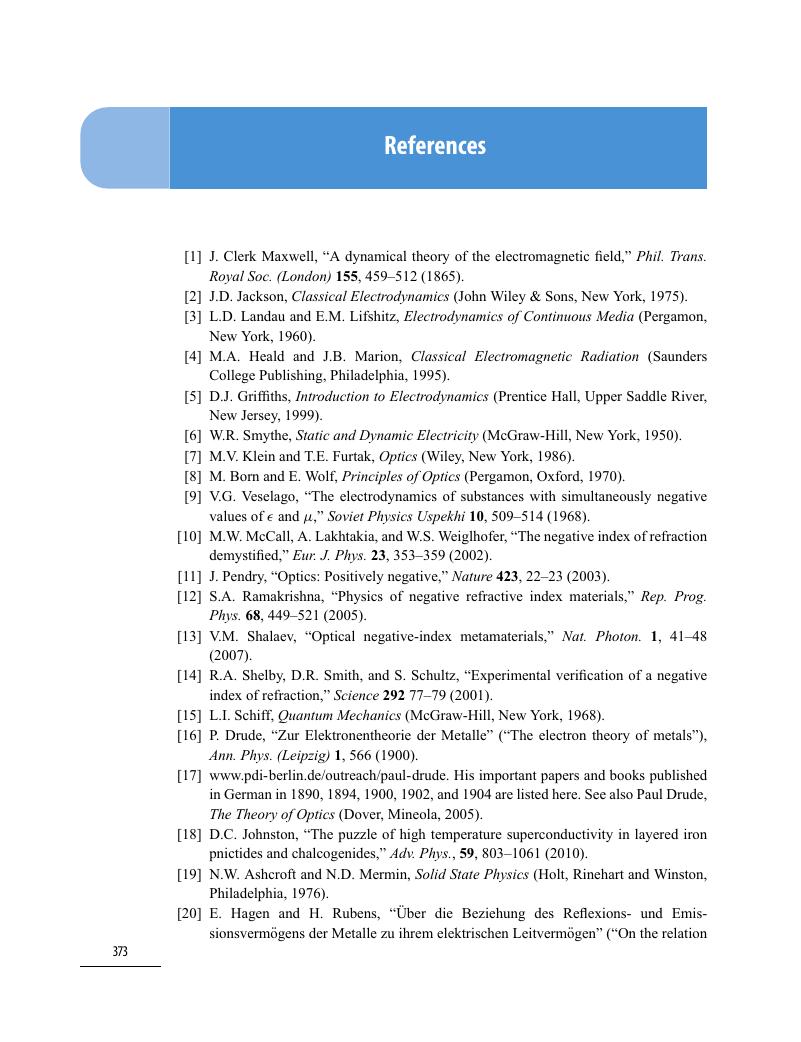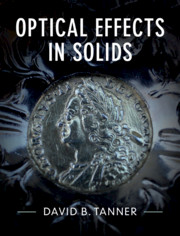Book contents
- Frontmatter
- Dedication
- Contents
- Preface
- 1 Introduction
- 2 Maxwell’s Equations and PlaneWaves in Matter
- 3 The Complex Dielectric Function and Refractive Index
- 4 Classical Theories for the Dielectric Function
- 5 Phonons
- 6 A Look at Real Solids
- 7 Transmission and Reflection
- 8 Free-Electron Metals
- 9 Optical Excitations: Quantum Mechanics
- 10 Kramers–Kronig Relations and SumRules
- 11 Superconductors
- 12 Semiconductors and Insulators
- 13 Strongly Interacting Solids
- 14 Nonlocal Effects
- 15 Anisotropic Crystals
- 16 Magneto-Optics
- 17 Inhomogeneous Materials
- Appendix A Notes about Units
- Appendix B Maxwell’s Equations in SI
- Appendix C Partial Derivatives and Vector Operators Acting on Plane Wav
- Appendix D The Wave Equation
- Appendix E Reflection and Transmission at Oblique Incidence
- Appendix F Field Guide to Optical “Constants”
- Appendix G Software
- References
- Index
- References
References
Published online by Cambridge University Press: 29 April 2019
- Frontmatter
- Dedication
- Contents
- Preface
- 1 Introduction
- 2 Maxwell’s Equations and PlaneWaves in Matter
- 3 The Complex Dielectric Function and Refractive Index
- 4 Classical Theories for the Dielectric Function
- 5 Phonons
- 6 A Look at Real Solids
- 7 Transmission and Reflection
- 8 Free-Electron Metals
- 9 Optical Excitations: Quantum Mechanics
- 10 Kramers–Kronig Relations and SumRules
- 11 Superconductors
- 12 Semiconductors and Insulators
- 13 Strongly Interacting Solids
- 14 Nonlocal Effects
- 15 Anisotropic Crystals
- 16 Magneto-Optics
- 17 Inhomogeneous Materials
- Appendix A Notes about Units
- Appendix B Maxwell’s Equations in SI
- Appendix C Partial Derivatives and Vector Operators Acting on Plane Wav
- Appendix D The Wave Equation
- Appendix E Reflection and Transmission at Oblique Incidence
- Appendix F Field Guide to Optical “Constants”
- Appendix G Software
- References
- Index
- References
Summary

- Type
- Chapter
- Information
- Optical Effects in Solids , pp. 373 - 396Publisher: Cambridge University PressPrint publication year: 2019

